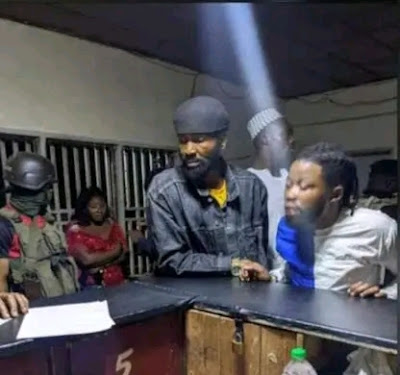Overcoming Sociocultural Barriers: Pathway To Effective Clubfoot Treatment In Cameroon
 |
| Child With Untreated Clubfoot |
By Raymond Dingana
If there is one significant stumbling block in the way of clubfoot treatment in Cameroon, it is sociocultural barriers. This explains why calls have emerged from various sectors of society, urging community members to dismantle these barriers affecting clubfoot treatment, particularly in the North West Region.
What is Clubfoot?
Clubfoot is a condition where a baby's foot is twisted out of shape or position, causing it to point downward and inward. The front of the foot turns in and down, while the sole may face backward. This common congenital birth defect can be effectively treated, especially when addressed early.
The Impact of Sociocultural Barriers
Unfortunately, sociocultural barriers hinder access to clubfoot treatment, prompting calls for their removal. Tamon James, the National Coordinator of the Cameroon Clubfoot Care Program at the Cameroon Baptist Convention Health Services, emphasizes that these barriers are detrimental to treatment efforts.
 |
| Tamon James Speaking On World Clubfoot Day |
Tamon James, National Coordinator of the Cameroon Clubfoot Care Program with the Cameroon Baptist Convention Health Services, (CBCHS), highlights that sociocultural barriers hinder effective clubfoot treatment.
“One child born with clubfoot may have a parent or grandparent who also had the condition. If that grandparent was a prominent figure in the community, parents may feel proud to keep the child’s clubfoot as a way to remember their ancestor. They may resist treatment, seeing it as a means of reconnecting with their heritage.”
Tamon adds,
“Others view it as a curse. In families where a child is born with clubfoot, some might believe it’s a result of past misfortunes, leading to a lack of interest in treatment. Some even attribute it to superstitions, believing that night outings by the mother or encounters with spirits are to blame. Instead of seeking medical help, they may turn to traditional healers, which are often ineffective.”
Ongoing Efforts and Progress
Despite these challenges rooted in cultural beliefs, Tamon highlights ongoing efforts to improve treatment accessibility.
“Since 2014, over 3,000 children have received treatment, with most completing their care. A child who starts treatment at birth can be fully corrected by age five.”
Statistics from the Cameroon Clubfoot Care Program show that 3,000 children have initiated treatment, with over 2,500 completing it. These children can now wear shoes like their peers, run, and play freely.
Raising Awareness
Efforts to debunk misconceptions about clubfoot have intensified. Raising awareness about the condition and its treatability is crucial for identifying affected children and ensuring they receive appropriate care.
A Success Story
Edna Christy Ateh, a mother whose child benefited from the Ponseti Method, shares her experience:
“My happiness was restored when I saw my child's foot being corrected. His legs are now strong, and he plays like any other child.”
Said Edna Ateh.
 |
| Edna Christy Ateh |
Community Involvement
Dr. Ambe Lionel Niba, the North West Regional Delegate of Public Health, states that the Physiotherapy Union is committed to ensuring that every identified child with clubfoot receives effective management.
These health personnel are working with the Regional Hospital in Bamenda, Nkwen Baptist Hospital, and others.
 |
| NW Regional Delegate Of Public Health, Dr Ambe Lionel Niba |
As the theme for the 2025 World Clubfoot Day emphasizes, community members are encouraged to integrate clubfoot detection into health district activities to promote early and effective treatment.






Comments